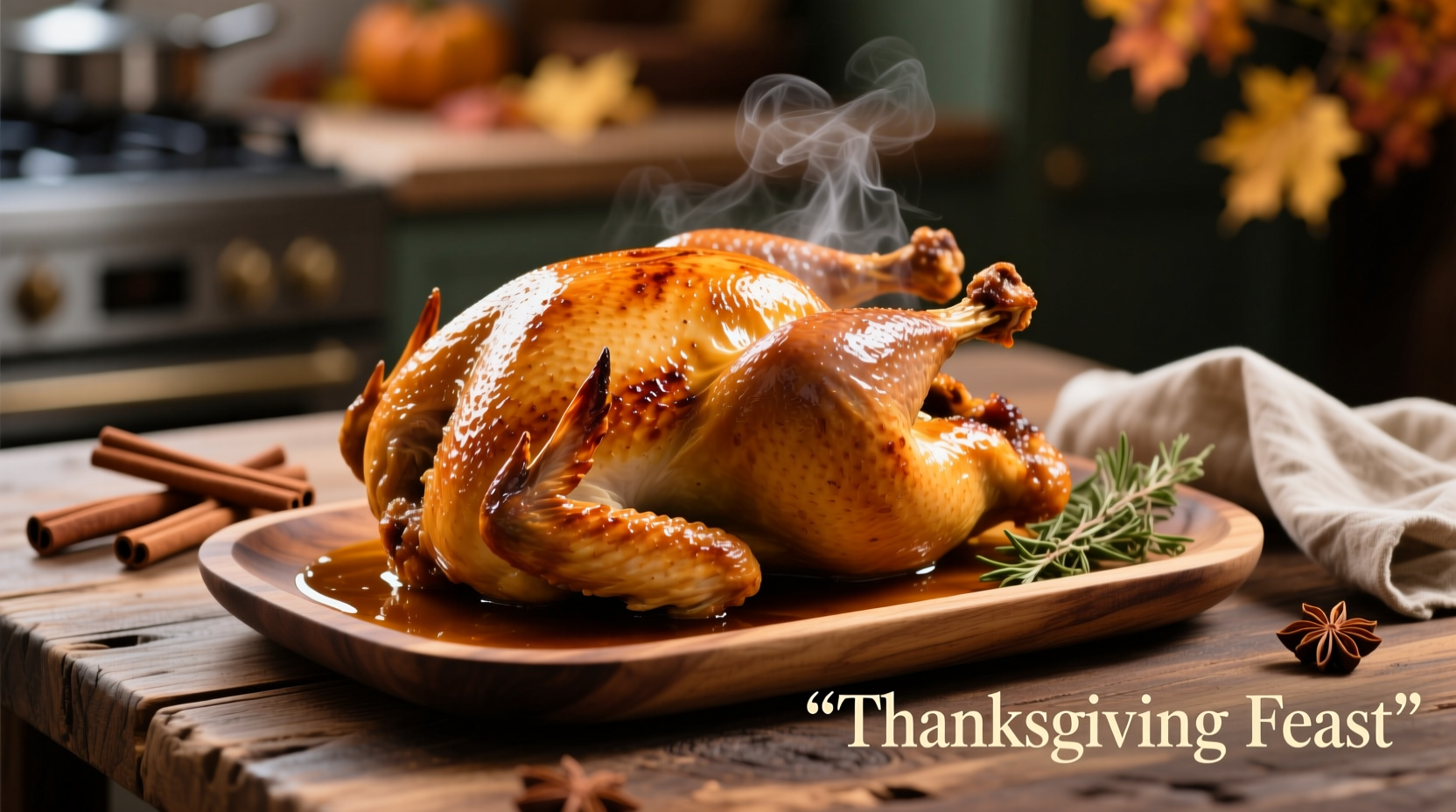Planning your holiday meal requires precise timing, especially when cooking a large centerpiece like a 17-pound turkey. Getting the cooking time right ensures moist, flavorful meat while meeting critical food safety standards. This comprehensive guide delivers exactly what you need to know for perfect results every time.
Understanding Turkey Cooking Fundamentals
Before you begin, understand that cooking time depends on three critical factors: your oven type, whether the turkey is stuffed, and most importantly, the internal temperature. The USDA Food Safety and Inspection Service mandates that turkey must reach 165°F internally to eliminate harmful bacteria like salmonella and campylobacter (FSIS.gov).
Your Step-by-Step Cooking Journey
Preparation Phase: Setting Up for Success
Proper preparation prevents common cooking disasters. Allow 24 hours of thawing time for every 4-5 pounds of turkey in the refrigerator. For a 17 lb bird, this means approximately 3-4 days of thawing time. Rushing this process creates uneven cooking and potential food safety hazards.
Season your turkey at least 12 hours before cooking to allow flavors to penetrate. Many professional chefs recommend a dry brine (salt and spices rubbed under the skin) rather than wet brining for better texture control.
Roasting Phase: Timing and Temperature Management
Preheat your oven to 325°F—this temperature provides the ideal balance between thorough cooking and moisture retention. Place the turkey breast-side up on a rack in a shallow roasting pan.
| Turkey Weight | Unstuffed Cooking Time | Stuffed Cooking Time |
|---|---|---|
| 12-14 lbs | 3-3½ hours | 3½-4 hours |
| 15-17 lbs | 3¾-4¼ hours | 4¼-4¾ hours |
| 18-20 lbs | 4¼-4¾ hours | 4¾-5¼ hours |
This cooking time chart follows USDA Food Safety and Inspection Service guidelines, which recommend 13 minutes per pound for unstuffed turkeys and 15 minutes per pound for stuffed turkeys at 325°F. For your 17 lb turkey, this translates to 3 hours 45 minutes to 4 hours 15 minutes unstuffed, or 4 hours 15 minutes to 4 hours 45 minutes stuffed.
Critical note about stuffing: Cooking a stuffed turkey increases food safety risks. If you choose to stuff your turkey, prepare the stuffing immediately before use, stuff loosely (about ¾ cup per pound), and verify that the center of the stuffing reaches 165°F. Many food safety experts recommend cooking stuffing separately for more consistent results.
Temperature Verification: The Only Reliable Method
Time alone shouldn't determine when your turkey is done. Always verify with a food thermometer:
- Insert thermometer into the thickest part of the breast (avoiding bone)
- Check the innermost part of the thigh and wing
- Verify stuffing temperature if used
If your turkey reaches the proper temperature before the expected time, remove it immediately. If it's taking longer, continue cooking and check every 15 minutes. Remember that turkey continues cooking while resting—this carryover cooking can raise the temperature 5-10 degrees.
Resting Phase: The Secret to Juicy Meat
Never skip the resting period! After removing your turkey from the oven, tent loosely with foil and let it rest for 20-30 minutes before carving. This critical step allows juices to redistribute throughout the meat. Cutting too soon causes precious juices to escape onto your cutting board rather than staying in the meat.
Special Considerations for Perfect Results
Oven Type Variations
Convection ovens cook approximately 25% faster than conventional ovens. If using a convection setting, reduce cooking time by 25% while maintaining the same temperature. Always rely on internal temperature rather than time alone when using convection.
Troubleshooting Common Issues
Brown too quickly: If your turkey is browning faster than expected, reduce oven temperature by 25 degrees and tent the breast loosely with foil.
Cooking too slowly: Verify your oven temperature with an independent oven thermometer. Many home ovens have inaccurate thermostats that can throw off your cooking time.
Dry breast meat: This typically happens when the breast cooks faster than the dark meat. Consider using a tent of butter-soaked cheesecloth over the breast during the first half of cooking.

Pro Tips for Holiday Success
Start checking your turkey's temperature one hour before expected completion time. Set multiple timers: one for when to start checking temperature, one for when to add foil if browning too quickly, and one for when the minimum cooking time ends.
For more complex flavor profiles, consider dry brining with herbs and spices 24-48 hours before cooking. This technique seasons the meat deeply while helping the skin crisp beautifully.
When planning your holiday meal timeline, remember that the resting period is essential prep time for finishing side dishes and setting the table. Don't try to carve the turkey immediately after it comes out of the oven.
Frequently Asked Questions
Can I cook my turkey at a higher temperature to save time? While some recipes suggest higher temperatures, the USDA recommends 325°F as the minimum safe temperature for even cooking. Higher temperatures risk burning the exterior before the interior reaches safe temperatures.
What if my turkey isn't done by dinnertime? If you're running behind schedule, keep the turkey warm by tenting with foil and leaving it in a 150°F oven while you finish side dishes. Never hold cooked turkey below 140°F for more than 2 hours.
How do I know if my turkey is properly thawed? A completely thawed turkey will have soft flesh throughout and the leg joints will move easily. Never cook a partially frozen turkey as it creates uneven cooking and potential food safety issues.











 浙公网安备
33010002000092号
浙公网安备
33010002000092号 浙B2-20120091-4
浙B2-20120091-4